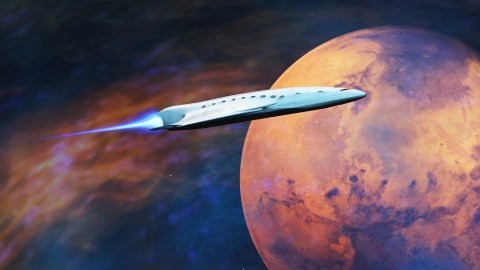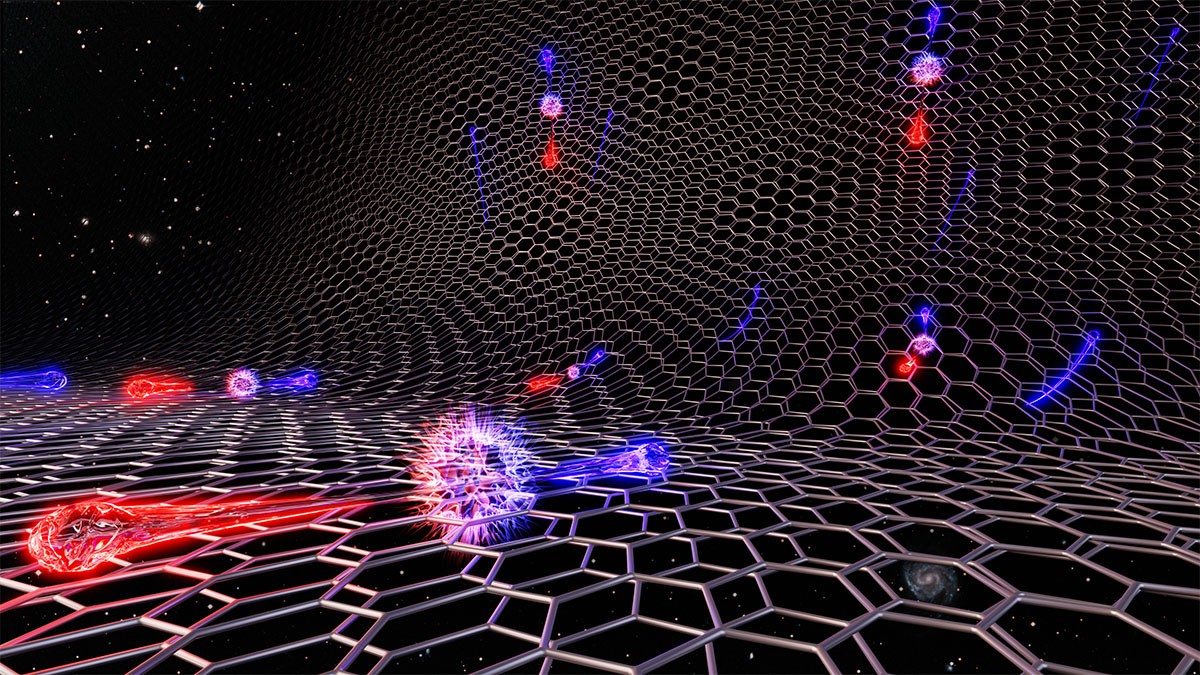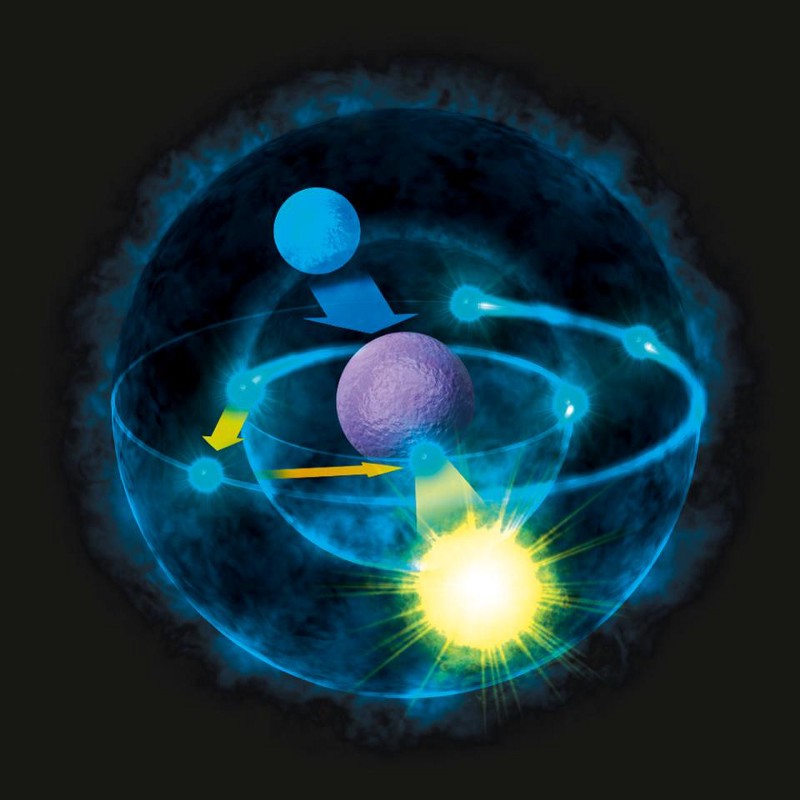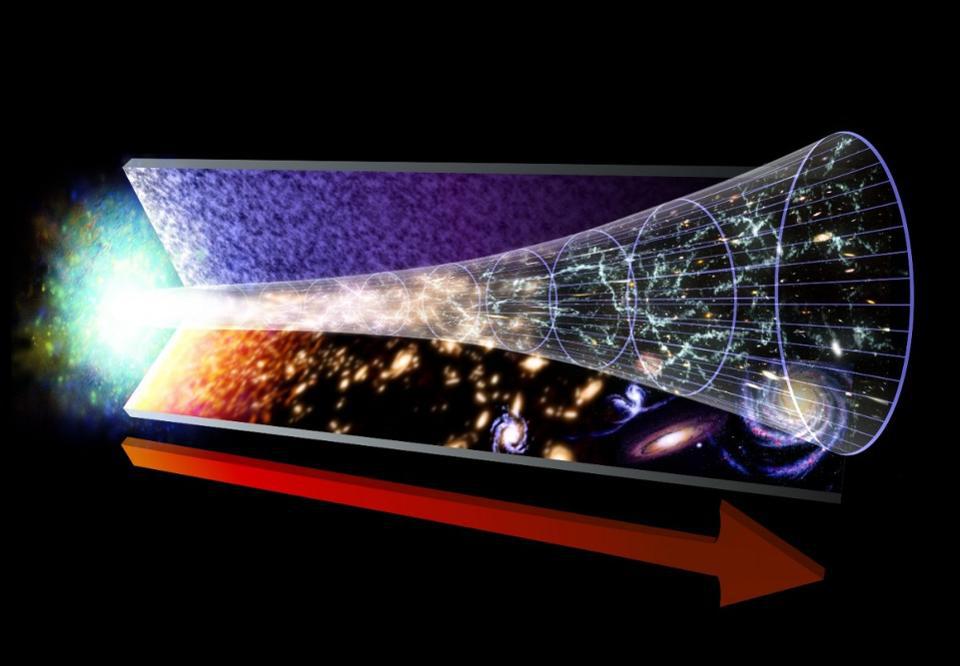What is negative energy? And can it give us wormholes and warp drives?

- “Negative energy” is often mentioned in the context of wormholes and warp drives. But what is it? And is it even real?
- It is theoretically real. Quantum mechanics has taught us that even empty space contains energy. “Negative energy,” therefore, is the state of having less energy than empty space.
- The trick is that nobody knows how to achieve this — and it may be impossible.
Energy has several different dictionary definitions as well as a technical version in physics textbooks, but boiled down to its essence, energy is the ability to effect change. A hunter’s taut bowstring with an arrow perched on it has a lot of potential energy. The change that is effected when the bowstring is released is an arrow shot at high speed through the air. That form of moving energy is called kinetic energy, and it can also effect change — like when the arrow hits its target, which means the hunter’s family will eat that day.
Energy is ubiquitous in our Universe. Indeed, everything we see can be thought of as an endless dance of energy, with the energy changing forms — as logs burn, which boils water for coffee, which is drunk by groggy people headed off to work, where they can do their job and change the world around them. Energy is constantly flowing through objects and people, resulting in the tumultuous world in which we live.
Negative energy
What about negative energy? Negative energy is often mentioned in the context of building wormholes (tunnels through space through which travelers can instantly travel) or warp drive engines that will allow us to travel through space faster than light. But is it real?
In the world of motion (kinetic) energy, energy is positive. But that’s not always the case with stored (potential) energy. Consider a large rock located on the edge of a very high cliff. You know what will happen if someone pushes the rock off the edge: It will fall to the bottom with increasing speed and land, making a loud noise and maybe breaking apart. The potential energy of the rock feeling gravity at the top of the cliff will be transformed into the kinetic energy of the fast moving, heavy rock, crashing into the bottom. In physics language, potential energy is converted into kinetic energy.
Now imagine two people looking at that rock, one person at the bottom of the cliff and the other at the top. They both see the same thing, but they have different ways of describing the rock before it falls.
The person at the bottom of the cliff perceives the area around them as having zero potential energy — after all, they are standing on the ground. To this person, an object on the ground next to them also has zero potential energy, but the rock high above them on the cliff has a lot of positive potential energy.
The person at the top of the cliff has a different perspective. Like the person at the bottom of the cliff, they would insist that their potential energy is zero. After the rock has fallen to the bottom of the cliff, the person at the top would say that it has much less energy than it did when it was at the top. Thus, this person would conclude that the rock had zero potential energy at the top of the cliff but negative potential energy at the bottom.
From a third person perspective, we can see that the two observers both agree that the rock had more potential energy at the top of the cliff and less at the bottom. The difference is that the top observer says that the rock had negative potential energy when it hit the ground, while the bottom observer said the rock never had negative energy. This underscores the idea that the numerical value for potential energy is arbitrary, and only differences matter.
Wormholes and warp drives
In 1935, Albert Einstein and his student Nathan Rosen were studying black holes, and they realized that they could find mathematical solutions where two black holes could be connected by a tunnel called a wormhole. Hypothetically, objects could pass through the wormhole, taking little or zero time to traverse. The only problem is that in order for the wormhole to be stable — meaning that it doesn’t collapse — they needed negative energy to make it all work.
In 1994, theoretical physicist Miguel Alcubierre wrote a paper that proposed a type of warp drive, now called an Alcubierre drive, that bent space in front and behind an object — namely, shortening the space in front and lengthening it behind. Presto! Instant Starship Enterprise. However, once again, his idea required negative energy.
Empty space is filled with all sorts of fields: gravitational ones set up by the mass of surrounding objects, electromagnetic ones from stars and other light-emitting things, and even quantum jitters of subatomic particles flickering in and out of existence too quickly to see. (These particles are called virtual particles.)
These fields fill space with energy. Even if gravity and electromagnetic sources are removed, the virtual particles persist. Empty space has energy. In this context, what negative energy means is having less energy than empty space. And that’s where things get hard. Nobody knows how to get less energy than empty space. If we knew how, we could exploit that energy difference and have limitless power. (The idea is called zero-point energy.)
In the case of wormholes or warp drives, physicists imagine a form of mass, called “negative mass,” which would make negative gravity and therefore negative energy. But this is a wholly theoretical construct and has never been seen. More topically, you may have seen a recent story, in which scientists reported creating a quantum analog of a wormhole. While the reports are true, this was a computational analog, not a wormhole itself. The negative energy in the simulation wasn’t real negative energy.
Negative energy is a thing, but it’s a slippery concept. As in our cliff example, people can define situations as having negative energy, but that’s not the same as the exotic and exciting prospects surrounding wormholes and warp drives. For those, you need to find a way to reduce the energy of space itself below the minimum, and that’s not something we know how to do. Indeed, it may be (and probably is) impossible.





